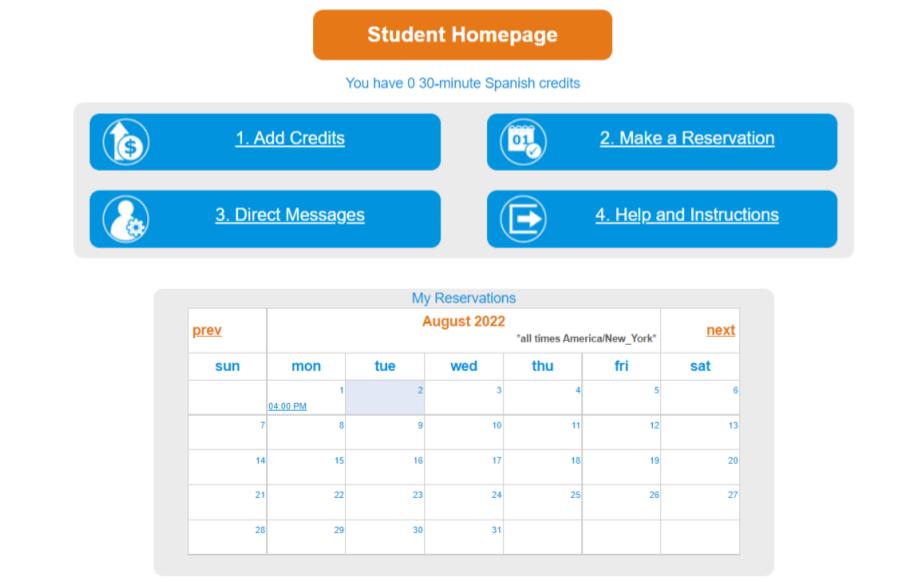Interpretive, Interpersonal, and Presentational Modes of Communication
Exploring Culture
We engaged in numerous practices over the course of the semester. Among these practices were repeated exercises, a multitude of programs designed to help us learn languages, and the continued engagement with several products that could help with conversational and vocabulary skills. Talkabroad, Lingro Learning, and Canvas were some of the products and programs used. As this is Spanish 202, there is an expectation of a smooth transition from early foundational skills to basic conversation and communication.
Much of this semester focused on the difference between Hispanic culture and the culture of the United States, as well as the way the two have merged through immigration and cultural immersion. I initially considered Hispanic culture to be similar to European culture, in that it is separated by nation extraneously, but it appears based on our studies that much of the differences in Europe are shaped by the language barrier, as latino and hispanic culture in the United States has a lot of similarities. Talkabroad allowed me to talk to people from these different cultures about their experiences. Lingro Learning was an excellent educational tool for showing us through media how these differences and similarities play into society. It was incredibly insightful how they were able to allow me a perspective on the challenges these cultures face, like racism, stereotypes, and societal boundaries. In one talkabroad conversation, I had the opportunity to learn just how similar my Christmas traditions were to those held in Mexico. I personally had no idea there would be that much in common, but it was a pleasant and educational surprise.
Engaging in Communities
Engaging in my community has been brought into a new light through the experiences I have had this semester. I used my Lingro Learning and Canvas vocabulary at work, where there were many opportunities to practice spanish with my bilingual coworkers. I was able to use Talkabroad to create global bonds with other people across borders.
I loved having the opportunity to bond with my classmates in study groups as well. I think the most valuable thing that came about from this semester were some strong bonds of friendship, forged in the fire of exams and short quizzes as the semester went along. It was a pleasant and unexpected community, but I think it best highlights one of the primary features of this class- community.
Interpersonal Communication
It goes without saying that mastering the art of interpersonal communication is one of the most integral parts of learning a new language. This is where valuable programs like Canvas’s discussion board feature and Talkabroads conversational programs came in handy. Through these, we worked on our interactive and conversational skills. Another part of this class that allowed for reading and writing comprehension were the Lingro Learning activities, particularly the ones that involved recording ourselves and writing short paragraphs entirely in Spanish based on a prompt given.
The part of this class that I felt was most useful to my Spanish-learning journey was Talkabroad. Engaging in 15 minute conversations with fluent Spanish speakers allowed me to develop foundational skills, learn the basics of communication, and increase my oral comprehension. It was a struggle, as many of the Spanish speakers I spoke to were from different regions and therefore had different dialects. However, despite this challenge, I feel as though an area in which I really excelled was engaging in a fluid, human conversation based on the skills and vocabulary that I had learned over the course of the semester. Next time, I’d likely prepare a little more before my Talkabroad conversations.
In regards to the discussion post, I believe that the most value they offered were in the discussions on culture and human connection. I learned a lot about the way my peers interact with the world, particularly in regards to the Hispanic culture many of them held. It was a struggle to relate, because I do not share the Hispanic culture, but I do feel as though I learned a lot in regards to heritage, pride, and the diversity here at ODU.
Presentational Speaking
We did not engage in many presentational speaking opportunities over the course of this virtual semester. Likely the closest any of us came to actively presenting was the conversations with our professor during the oral portion of the final exam. Here, we were required to sit and speak with the professor for 15 minutes on a selection of topics chosen beforehand.
Similar to the Talkabroad conversation, I felt as though I really excelled at crafting a fluid, comprehensive conversation. It felt as though I was really talking and not just reciting my notes. On the other hand, I struggled with grammatical concepts and expressing those in conversation. I often found ways around using those concepts through my limited knowledge of Spanish, but I believe I should further study and practice the active implementation of grammar in conversation.
Presentational Writing
There were not many opportunities to craft presentational materials in this class. However, the closest that I’d say we came to creating presentational methods of communication related to our Spanish learning would be some paragraphs that we wrote as a part of our homework assignments within the Lingro Learning program. These paragraphs involved responding to a prompt completely in Spanish and stating a certain perspective that we had in regards to what the prompt was asking.
It was difficult at first to figure out a way to use the vocabulary that we had learned up until that point to create a comprehensive response to the prompts that were given. They were often related to subject material that we had not covered in depth, and therefore required quite a bit of personal introspection Within the context of the assignment. However, over time, it became easier and easier to read between the lines and answer the questions that we were given in order to create comprehensive and wide-reaching responses to the questions. I believe I personally excelled at applying vocabulary to the prompts. In the future, I’d likely add a little bit more content, forgoing a two sentence response for a five sentence response.

Interpretive Listening
Over the course of the semester, we had to take short quizzes that often included an interpretive listening section. This section would involve us clicking on an audio box, listening to the audio provided, and crafting a response, often in the form of a vocabulary word the audio was speaking about, to answer the question asked.
This was not the only section of the class that involved listening, however. The Talkabroad conversations, the oral exam given by our professor towards the end of the semester, and a variety of other materials were provided in order to increase our listening comprehension. I have attached below a recording of a Talkabroad conversation in link form. In this conversation, it is clear that I find it challenging to use current grammatical terms. However, my understanding of what the person on the other side of the screen is saying is clear and precise. I found it interesting to interact with people around the world, and I thought that I did very well in the area of listening comprehension. As I have progressed over the course of this semester, my listening comprehension has only grown, likely due to the extensive amounts of exposure over the course of the semester.
https://drive.google.com/file/d/1wPcn1ta19SJSvbFGLhRKpvvsZKLYwpNk/view?usp=sharing
Interpretive Reading
Over the course of the semester, we were required to read a variety of articles. Many of these articles were in Spanish, and all had to do with the integration of Hispanic culture into the culture of the United States, and how the two exist simultaneously separately and as one.
While I feel that I already had an excellent grasp of reading comprehension before entering this class, more practice never hurts. Being able to read in Spanish is an integral skill to growing your vocabulary, understanding basic grammatical concepts, and understanding how words fit together in another language. I think I really struggled with understanding the past tense in the terms of the preterite, but I overcame that and ended up thoroughly enjoying the content of the articles.


